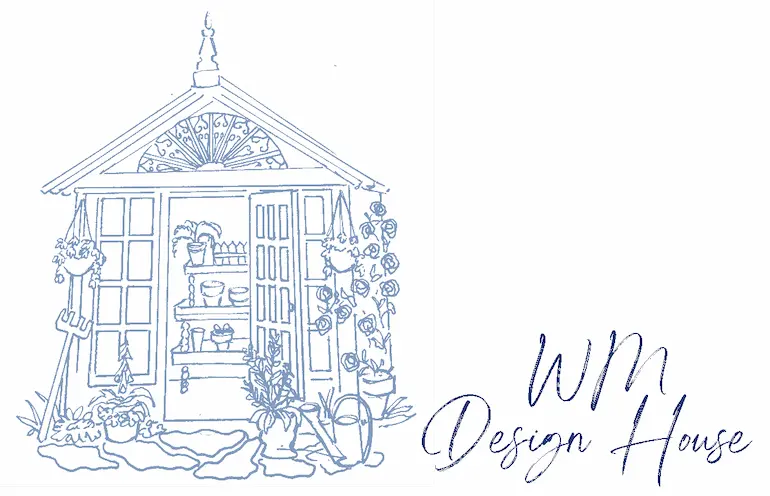Complete Guide to Gardening
Welcome to my Complete Guide to Gardening! Here, I share information about all types of gardening topics, from how to prep your garden for planting to where to shop for plants, seeds, and bulbs. You’ll find answers to common gardening questions and links to helpful posts across my blog. If you have a gardening question not answered here, contact me and I’d be happy to address it for you.
Happy gardening!
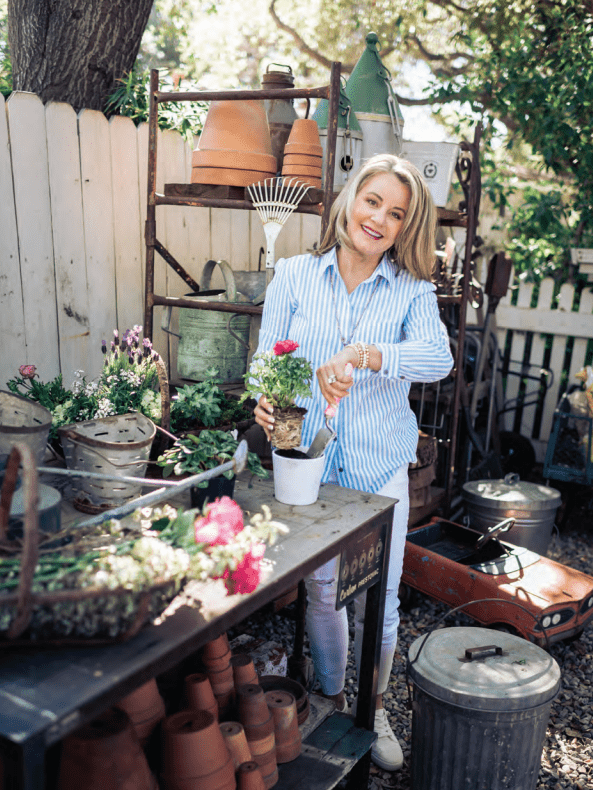
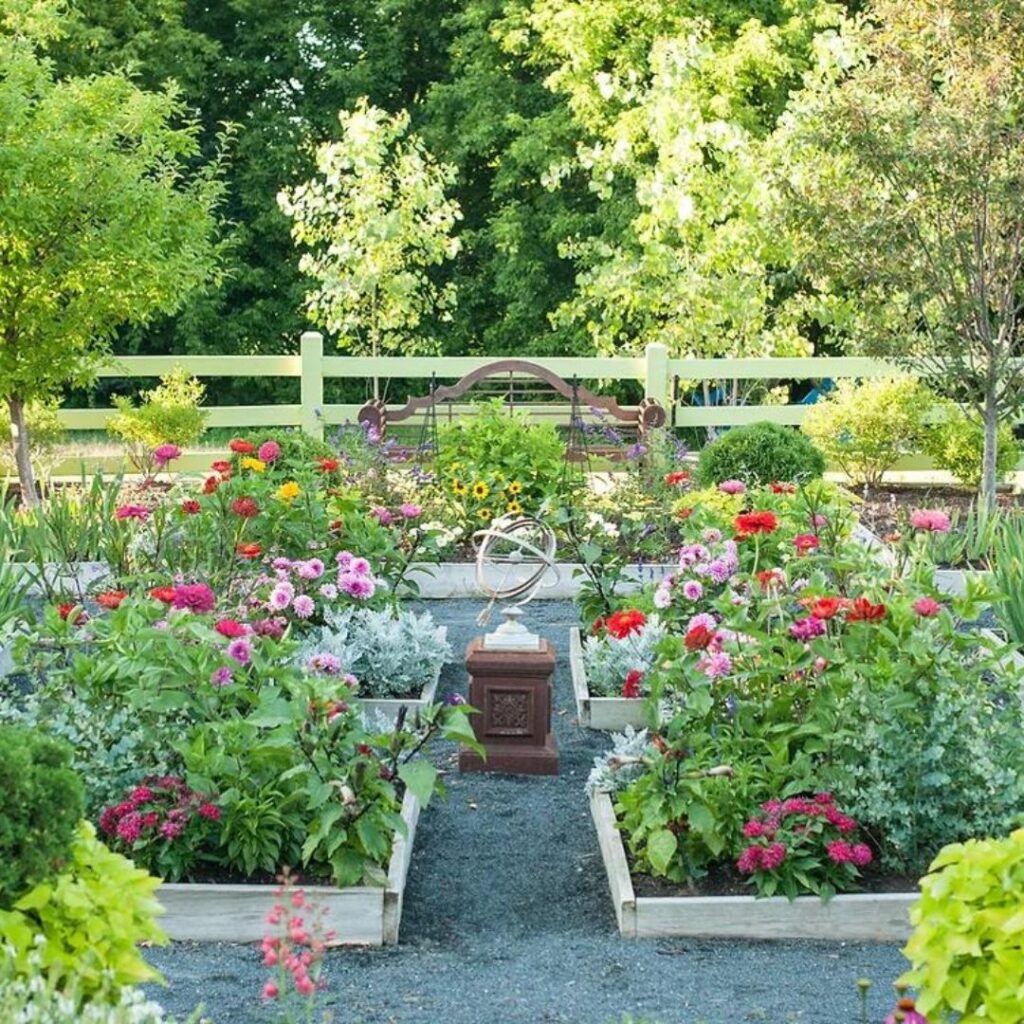
Gardening for Beginners
If you are new to gardening, it may seem overwhelming. One glance at the table of contents and everything there is to know may have you questioning your ability. But starting a garden doesn’t have to be complicated! Here are a few simple tips to get your garden off to a good start.
How do you start gardening?
The best way to start gardening is with a little bit of research and planning. Follow the steps below to set yourself up for success. Remember, you don’t need to know everything there is to know to get started. Just jump in! You’ll learn a lot as you go, and you can reference this guide for more details later.
What are some tips on gardening for beginners?
- Select the correct location. Look for a spot with lots of sun that is close to home for easy access and also nearby a water source.
- Decide whether you will start your garden in the ground, use raised garden beds or containers. Raised beds are a popular option for small spaces or if your natural soil is not ideal.
- Make sure you have good, healthy soil to start your garden. Find out how to test and prep your soil below.
- Choose what you want to grow. Then, decide whether you want to from seed or established plants. This may depend on the type of plants you want to grow and the time of year.
- Plan your garden layout. Check out the sections on flower and vegetable gardening below for tips!
Soil Testing
To grow healthy plants in your garden, start by testing the soil. A soil test can tell you a lot about your growing area and provide insight into improving it to enhance plant growth. In addition, test results can help guide you in deciding on fertilizer and amendments to ensure your soil is in top shape.

How can you tell soil is unhealthy?
You can tell a lot about the health of your soil by its appearance. Healthy soil often has a dark color and is rich in organic matter. Soil that is dry or crumbling likely does not have the proper moisture or nutrients needed to grow healthy plants. If soil is hard and compacted, it will be difficult for roots to spread out and obtain the air and water they need. Also, if plants are not growing at the proper rate or look wilted, the soil composition could be to blame.
How do you fix unhealthy soil?
Improving garden soil takes time and dedication. Organic matter, such as compost, should be worked into the ground frequently. This will help to improve soil structure, promote proper drainage, and keep the soil loose. It also provides soil with vital nutrients and helps retain nutrients and maintain a neutral pH. For a more detailed analysis, conduct a soil test every few years to determine which additional nutrients may be needed.
How do you test your soil?
Many garden stores sell DIY test kits to test your soil at home. These are not as accurate as using a soil testing service, however. When you use a lab testing service, collect a sample from your garden, send it to the lab, and they will run a detailed nutrient analysis for common soil components. Then, they will provide a report with your soil test results. Once you understand your soil needs, add organic amendments for a nutrient boost.
Soil Prep
Aside from testing your soil to ensure you have the ideal composition to promote healthy plants, there are other things you can do to get your garden ready for planting.
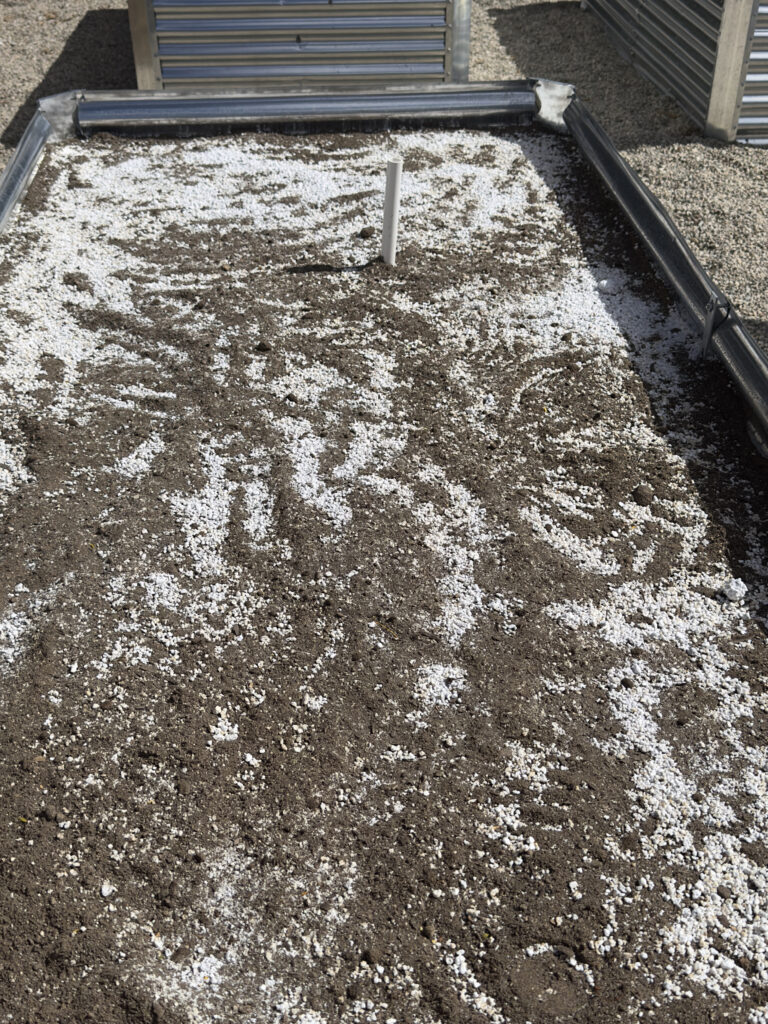
How do I prepare my soil for planting?
First, clear away any unwanted rocks, weeds, or fresh leaves that may have made their way to your planting area. Next, aerate your soil to improve drainage and nutrient absorption. Loosen compacted dirt by turning or tilling it to a depth of about 14 inches. Then, add compost, conditioners, and amendments based on your soil composition. Once the soil is in place, water thoroughly and level it with a rake to prevent erosion.
When should I start preparing my soil for planting?
You can start preparing the soil for planting as soon as the winter frost has lifted. In addition to revitalizing the soil as described above, late winter and early spring are great times to build new garden beds and tidy up existing beds and borders.
How long should you let soil settle before planting?
After preparing the soil, let it settle for about two weeks before planting. This time allows microorganisms and insects to reestablish, break down organic material, and blend nutrients throughout the planting area.
Fertilizing
In addition to adding organic matter and compost to your garden, you can also add fertilizer to improve the health of your soil.
What is the best way to fertilize?
Fertilizers improve the soil’s nutrient level to promote healthy growth in your garden. Nutrients found in most fertilizers, such as potassium, phosphorous, and nitrogen, help plants grow bigger, stronger, and faster. Without fertilizer, it is difficult for your garden to replenish nutrients naturally.
What are the benefits of fertilizing?
To best understand what nutrients your garden needs, get a soil test. Based on the results, choose a fertilizer to replenish your soil and create ideal growing conditions. Apply fertilizer before planting and work into the ground to a depth of about 5 inches. Then, water thoroughly. Always follow package instructions to ensure proper application.
When should I fertilize my garden soil?
Fertilizer is usually applied and mixed into the soil in the spring before planting. However, additional applications may be necessary throughout the season, and the ideal time depends on the type of plants in your garden. Generally, the best time to fertilize is when plants grow the most and require the most help replenishing nutrients.
Did you know you can use eggshells as a garden fertilizer? Check out my blog post to learn more: Using Eggshells for Fertilizer in the Garden
Gardening Equipment
It is easy to go overboard when purchasing gardening equipment and can cost you a lot of money and storage space. When choosing your equipment, focus on high-quality basics that will stand the test of time to get the most out of your investment.
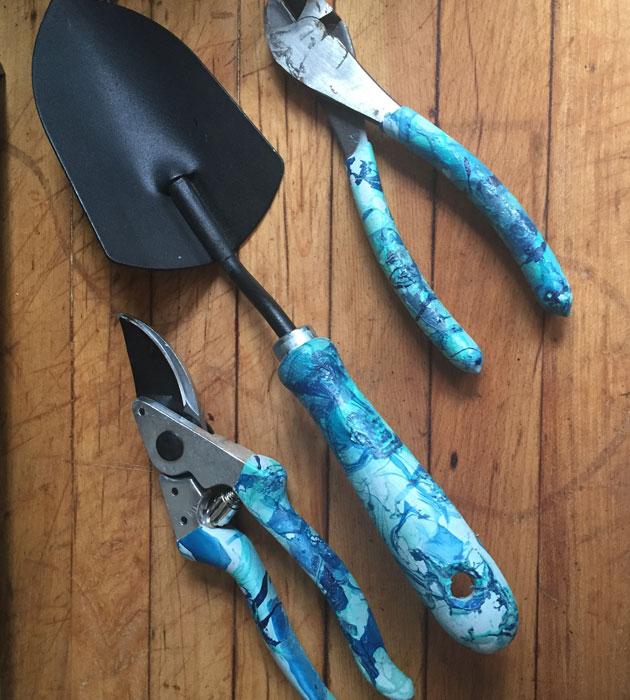
What are the most important gardening tools?
Here are the ten most important and versatile tools that every gardener needs in their shed:
- Gardening gloves
- Pruning shears
- Hand trowel
- Hand fork
- Spade or shovel
- Garden fork
- Garden rake
- Garden hoe
- Garden hose or watering can
- Wheelbarrow
What are the best gardening tools for a home garden?
From a vast array of gardening supplies, I have settled on my favorite choices – the tools that make cultivating easy and enjoyable. Through experience, these tools always seem to come out on top when executing ambitious home garden plans. With them in tow, anything is possible. See my top picks here: The Best Top Ten Gardening Tools to use in your Home Garden
What tools are best for weeding?
Weeding is probably one of the least-liked gardening jobs. Not only is it hard work, the task never seems to be done. However, finding the right tools to help with weeding can make a big difference. The best tools for you depend on your garden conditions and preferences. Short-handled types provide the best control and power to remove weeds quickly and effectively. If you do a lot of weeding, look for an ergonomic weeder that feels comfortable in your hand.
Do you have old garden tools lying around that are past their prime? Learn How to Repurpose Old Tools into Succulent Planters, , or How to Create a Garden Clock out of Vintage Garden Tools.
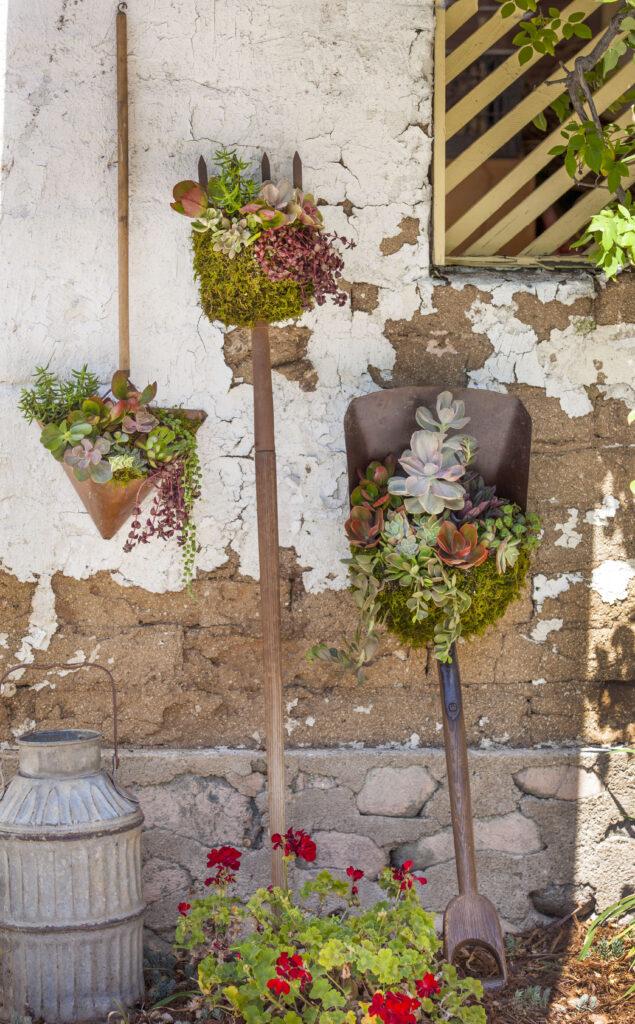
Where to Shop for Garden Plants, Seeds, and Bulbs
Everyone has a favorite place to buy plants, seeds, and bulbs for their garden. Whether you prefer to buy locally, online, or in-store, there are different benefits to shopping at each.
Does it matter where you buy your plants?
Shopping for your garden should be a fun and rewarding, so shop wherever you get the best experience, quality, and selection. For many, that is a local nursery. Not only are the plants well cared for, and you can buy native plants, the knowledgeable staff can help answer any questions. Alternatively, some people may find local garden stores limiting and prefer to shop online to access a greater variety of seeds and bulbs.
Is it better to buy plants online or in-store?
When buying plants, it is almost always better to purchase in-store. Locally grown and cared for plants are usually healthier, bigger, and perform better. In addition, you can see them in person and get to take them home immediately. When you buy online, more variety may be available, but plants are often smaller and less healthy. If you enjoy the more extensive online selection, consider buying seeds instead of plants.
How do I find cheap plants for my garden?
The best way to find inexpensive plants, seeds, and bulbs for your garden is to shop locally. Look for a local nursery, garden store, or even supermarket sales. Another great option is to look for plant sales and swaps. Other local gardeners may be interested in trading seeds or seedlings to expand their garden variety and try something new.
Perennials
When selecting plants for your garden, knowing the difference between perennials and annuals is important, so you know the best way to care for them and help them thrive.
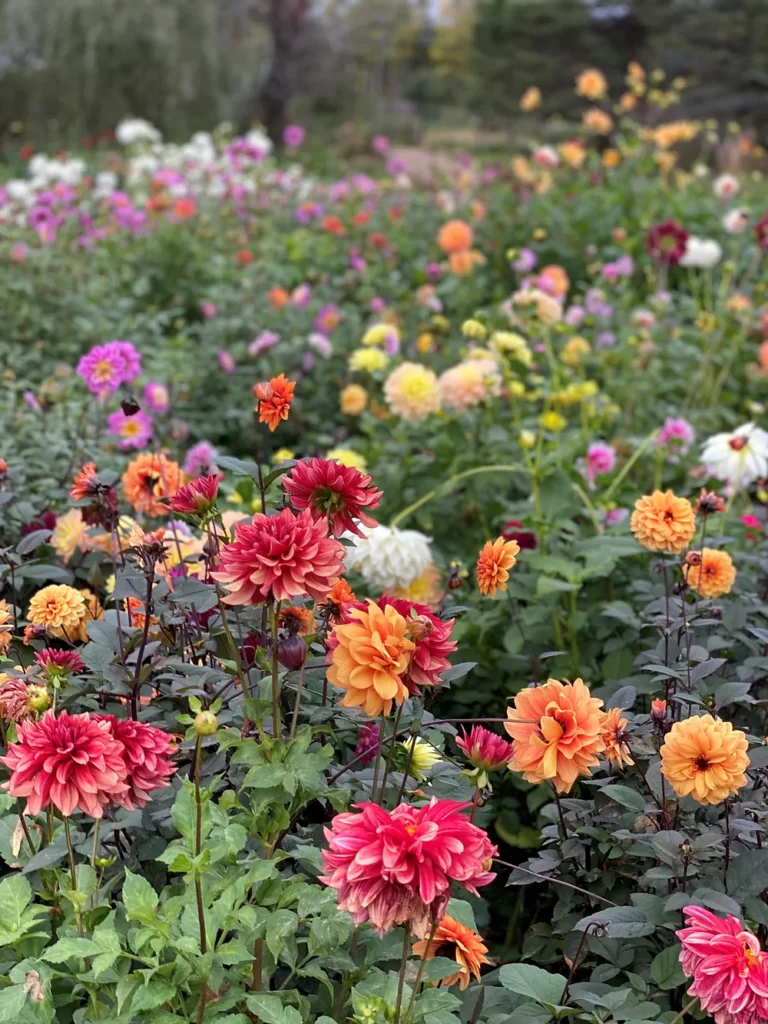
What are perennials?
Perennials are cold-hardy plants that will regrow again every spring. This contrasts with shorter-lived annual plants that only grow for one season, then die off. Perennials generally have a shorter blooming period than annuals, so many people like combining both types of plants in their gardens.
Do perennials come back every year?
Yes, perennials are plants that come back every growing season.
How many years does a perennial plant live?
Among perennials, there are short-lived and long-lived varieties. If given proper conditions and care, short-lived perennials will grow for about ten seasons, while longer-growing types may live for twenty years or more.
Be sure to check out these posts about selecting, planting, and caring for perennials:
37 of the Best Perennial Cut Flowers for your Cutting Garden
Are Dahlias Perennials? How to Plant and Care for your Dahlias
Annuals
Annuals play an essential role in any garden. They are a great way to experiment with new plants and colors, fill in bare spots, and enjoy many fast-growing, colorful blooms.
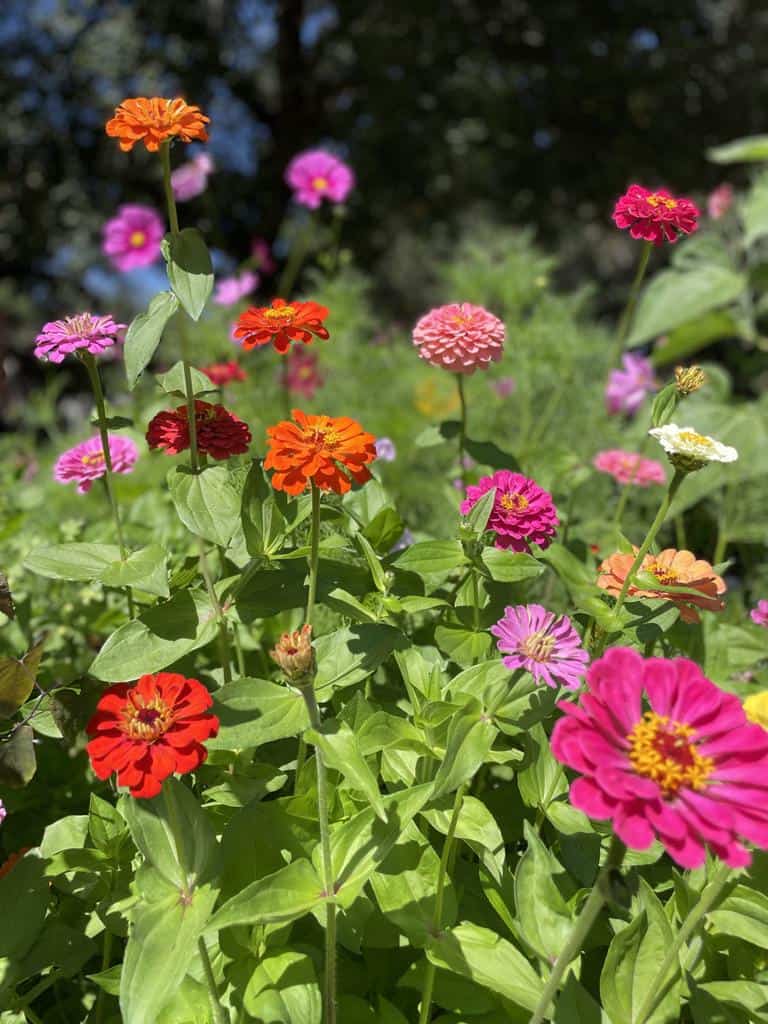
What are annual plants?
Annual plants grow for only one season. They germinate, flower, set seed, and then die during their life cycle. Their primary goal is to reproduce, so annual plants produce many flowers during this time. Their abundant blooms make them very desirable for seasonal gardens.
Do annuals come back every year?
No, annuals do not come back every year. They live for one growing season, often into the fall, then die off with the start of freezing weather. Unfortunately, this means you will need to replant them every year.
Can you keep annuals alive for more than a year?
Annuals will not survive living outside during freezing weather. However, you can prolong the life of annual plants by bringing them indoors during the winter.
For more information about annuals, check out these blog posts:
All About Growing Zinnias: Easy Beautiful Summer Flowers
How to force Paperwhite Bulbs to Grow
Flower Gardens
There is so much joy to be had in flower gardening. From selecting your favorite flowers and planning the layout to caring for them and watching them bloom, there is nothing quite like it. You can start a flower garden almost anywhere, whether you want to add beauty to an outdoor space or plant a cutting garden and create your own floral arrangements for your home.
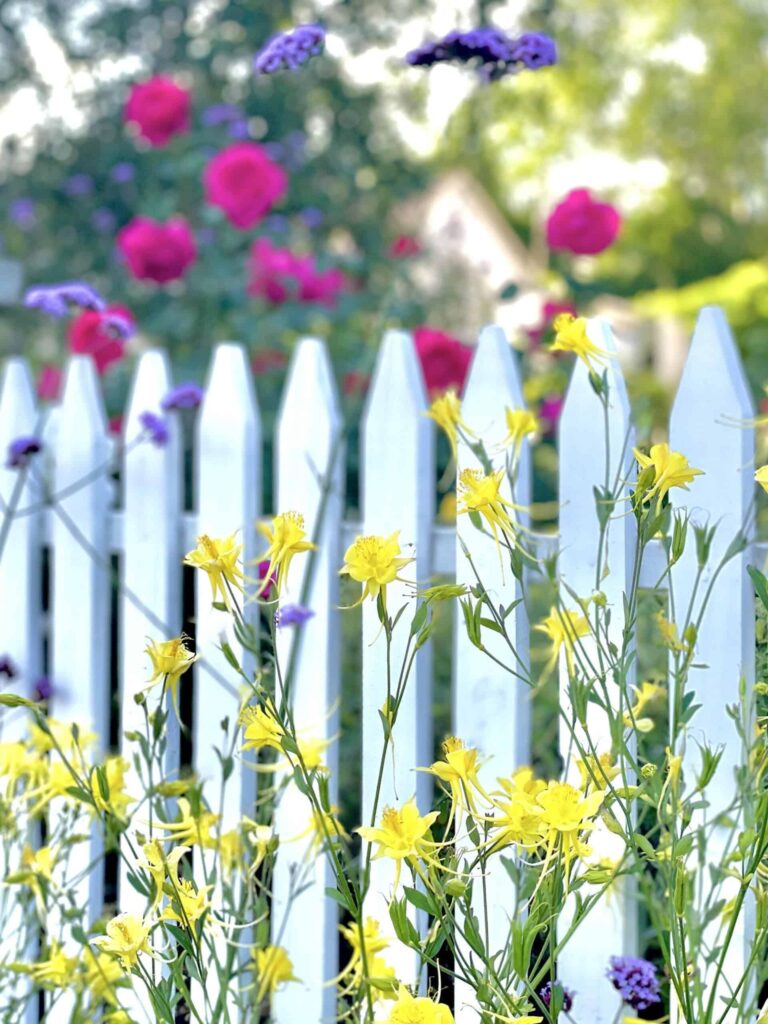
How do you lay out a flower garden?
To plan the best layout, you should know how you want your flower garden to feel and what you want to grow. Depending on the style you are hoping to achieve, plants can be placed strategically to create designs or patterns or kept more relaxed. Generally, you want to place tall plants in the back, mid-size plants in the middle, and short plants in the front to create a border. Plant in groupings instead of straight rows for a more natural feel. In addition to size, pay attention to color, shapes, and textures, and mix annuals and perennials to enjoy continuous blooms throughout the season.
When should I start my flower garden?
Knowing the frost date for your area is essential to understanding when it is safe to plant outdoors. If you are growing your flowers from seed, start them about 4 to 6 weeks before the estimated last frost date. This should give them enough time to grow strong enough to transplant, but some flower varieties may take more or less time. Read the seed packet for details. If you start plants inside, remember to harden them off to get them accustomed to the outdoors.
Is it better to water a flower garden in the morning or evening?
It’s better to water plants in the morning if you have the option. This gives them plenty of time to dry throughout the day. At night, water tends to sit on the foliage and around the roots, leading to undesirable conditions, such as rot, fungus, and pests.
Join me in the She Shed and learn about Preparing to Plant a Cut Flower Garden as I start my flower seeds in biodegradable cups.
Vegetable Gardening
There are few things more rewarding than growing your own food! Many home gardeners love having the ability to walk outside and pick fresh vegetables from their garden to enjoy with their next meal. Here are a few tips for beginner gardeners to get you on your way.

How do you start a vegetable garden?
If you are a beginner gardener, start small. Grow a few of your favorite vegetables in containers or a small raised garden bed. Select a location in a sunny spot near your home with easy access to water. Follow the tips below to plan your layout, and when it’s time to plant, use rich, healthy soil. Finally, do a little research about common pests and diseases and have a plan for how to handle them.
What is the best layout for a vegetable garden?
The best layout for your vegetable garden will depend on your space and what you are growing. Square foot gardening is very popular in raised garden beds because it is easy to implement and efficient. Some kitchen gardens are much less structured, using a charming blend of vegetable, herb, and flowering plants all growing together. Larger vegetable gardens are often grown in traditional in-ground rows.
When should I start a vegetable garden?
First, find out the average last frost date in your area. Then, wait a few weeks past this date to start planting your vegetable garden. This will ensure the soil is warm and dry enough for your seedlings to survive outdoors. If you want to start your plants indoors from seed, start them about 6 to 8 weeks before you plan on transplanting them.
Cottage Gardening
Cottage gardening is near and dear to my heart. On my property, my cottage gardens include a mix of perennials, annual flowers, vegetables, and other plants to create a charming and dreamy atmosphere with winding pathways and fun elements hidden throughout.
Learn more about the many elements in my garden here: Making Beautiful Things Grow: “in her garden.”

What is cottage-style gardening?
Cottage gardens are all about charm. This informal style uses a blend of many different types of plants in unconventional structures and combinations. Often bursting with flowers and surrounded by a white picket fence, these delightful gardens have a wild and romantic feel.
How do you create a cottage garden?
Have you ever heard the term “organized chaos”? This phrase describes cottage gardens well. There are no specific rules when creating a cottage garden, but there are certain elements you can incorporate that embody this style:
- Create soft, curving pathways to make it homey and encourage wandering.
- Add natural structures for plants to climb and fun rustic elements like decorative garden tools, lanterns, birdbaths, and fountains throughout.
- Surround your cottage garden with a picket fence to contain it.
What should be in a cottage garden?
Part of what makes cottage gardening so special is that you can plant whatever appeals to you. Mix and match different colors and textures and try unusual combinations. As you wander through a cottage garden, you never know what you will find, which is a big part of the charm! Cottage gardens often include pastel colors and romantic flowers like roses, peonies, and hydrangeas.
Everything You Need to Know About Growing Hydrangeas
Rose Gardens
Roses are one of the most adored plants among gardeners. You can create a rose garden in almost any space, whether large or small.

When should I start my rose garden?
For the best results, roses should be planted in the spring after the last frost or in the fall at least six weeks before the first frost.
How do you start a rose garden?
First, choose your roses wisely. There are many varieties and types, so research and know what you are getting. If you are a beginner, look for low-maintenance roses that require little upkeep. Next, choose a location. Roses do best in full sun in rich, well-drained soil. Finally, create the proper structure and ensure it has enough room to grow.
Are rose gardens hard to maintain?
Roses have a reputation for being fussy and hard to maintain. But in reality, caring for roses is easier than you may think. Follow my Ten tips for beautiful roses to ensure they have the optimal growing conditions to produce beautiful blooms all season long.
Herb Gardens
Growing herbs is an easy way to get started with gardening. You can easily grow them indoors or outdoors in containers or the ground. They not only enhance your food’s flavor, but they also bring beauty and fragrance to your garden.
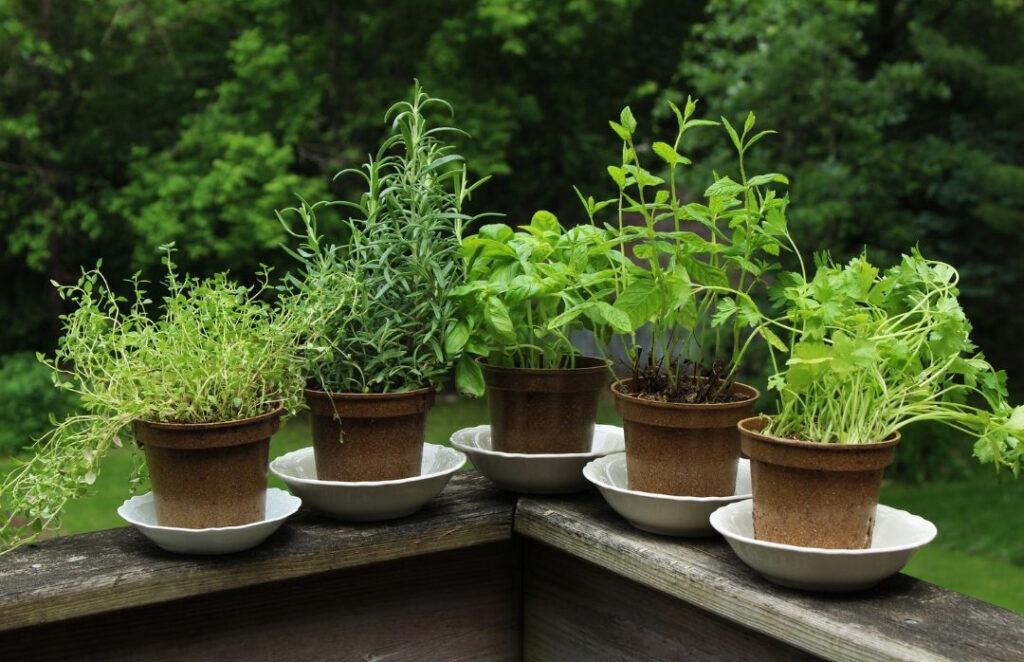
What herbs can be planted in a garden?
You can plant almost any herb in a garden, but not all thrive under the same conditions For example, some herbs do best in full sun, while others can grow in partial shade. Knowing whether an herb is an annual, perennial, or biennial is also essential in deciding how to grow them in your garden.
What type of herbs can be planted together?
Herbs can be planted together in the same container as long as they all require the same amount of light, water, and nutrients. Also, consider how each type of herb grows and plan space accordingly. For example, some herbs grow small and upright, while others tend to cascade.
What herbs cannot be planted together?
Some herbs like catnip, mint, lemon balm, and horseradish are considered invasive and should not be planted together. They can quickly crowd other plants and spread aggressively unless you control them. This is best done by planting them in their own containers.
Interested in starting an indoor herb garden? These are the 4 Easiest Herbs To Grow Indoors.
Raised Bed Gardening
If you’re starting a new garden or upgrading an existing growing space, consider raised garden beds. Whether you build your own or buy them pre-assembled, raised bed gardening has many benefits.
- You can put them just about anywhere.
- Since they are elevated, it is easier to access them.
- A defined growing space provides better protection than in-ground beds.
- It is easier to keep the soil healthy and amend it to your growing needs.
- They provide a longer growing season since the soil warms and drains more quickly.
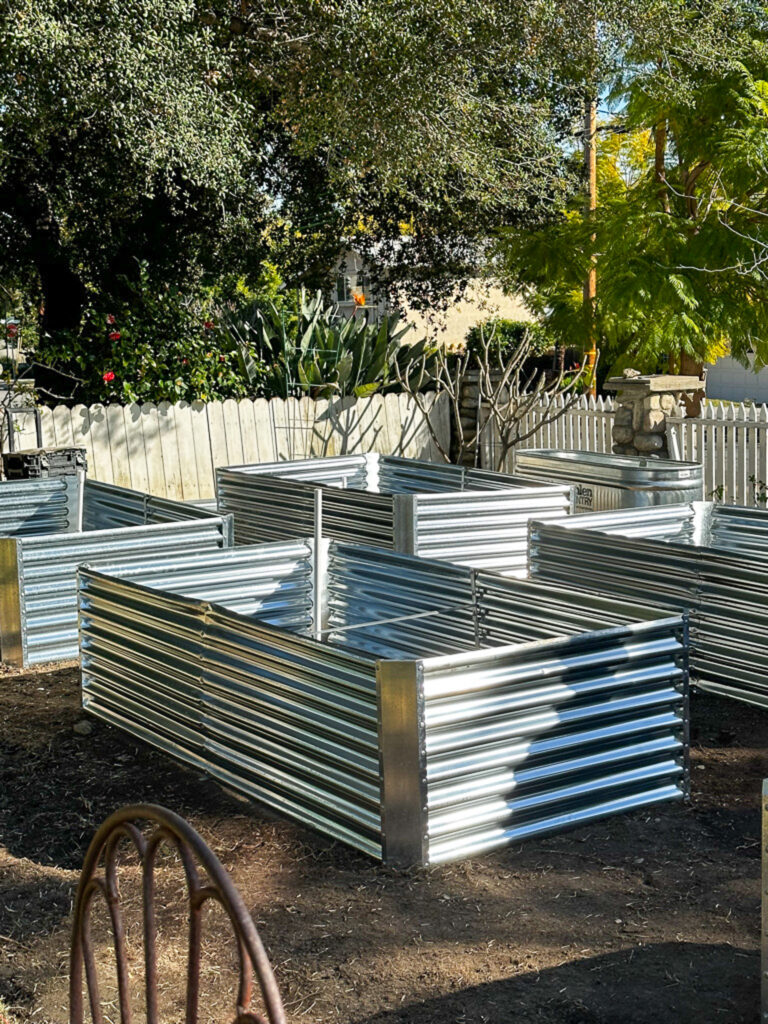
What is the best material to use for a raised garden bed?
Popular materials for raised garden beds include wood, composite wood, and metal. When it comes to wood, cedar is one of the best options because it is naturally rot-resistant. If growing vegetables, avoid pressure-treated wood to prevent chemicals from leaching into the soil. Another popular material for raised garden beds is galvanized steel because it is durable, affordable, and rust-resistant.
How deep should a raised garden bed be?
Raised garden beds can vary in height. In general, the deeper the soil, the easier it will be for your plant’s roots to grow and for your soil to retain moisture. Some beds start at 6”, but a depth of at least 10-12” inches is preferable.
What do I put on the bottom of a raised garden bed?
When putting in a raised garden bed, add a barrier at the bottom to prevent grass and weeds from growing through. Common materials used include cardboard, fabric, plastic, and mulch.
Container Gardening
If you have limited space, container gardening is an excellent alternative to in-ground and raised-bed gardening. Containers are easy to start and care for and often have fewer problems with pests and diseases.

How do I choose the best container for gardening?
Factors to consider when choosing a container for gardening include:
- Size – For plants with deep roots, choose a tall pot. Plants with shallower roots can be grown in shorter pots. If a plant starts to outgrow its container, transplant it into a bigger pot.
- Material – Containers can be made of almost any material as long as they have good drainage and a flat bottom. Common materials for gardening include clay, stone, ceramic, metal, wood, and plastic.
- Appearance – Many gardeners choose containers based on how they look to coordinate with their home and growing environment.
What is the best soil to use in container gardening?
Use potting soil or potting mix in container gardening. It is much lighter and fluffier than garden soil, creating the ideal growing environment for your container plants.
Should I water container plants every day?
Containers dry out more quickly than in-ground or raised garden beds because they have less soil. Check moisture levels often and water at least once a day. You may need to water twice a day in hot weather.
Easy Ways to Age Terra Cotta Pots and Style Them
Small Space Gardening
Even small gardens can produce a lot! Use these tips to learn how to garden in a small space and maximize your harvest.

How do you garden with little space?
If you are short on space, use raised garden beds or containers to grow plants. Plan your layout carefully, and use vertical supports to help plants grow up, not out. In addition, many gardeners utilize square-foot gardening, succession planting, and interplanting methods to maximize their harvest in a small space.
What grows well in a small space?
Many fruits, vegetables, flowers, and herbs can grow in small spaces. In fact, you can now find compact varieties of just about any plant you desire. Some of the easiest plants to grow in small areas include herbs like basil and chives, cut-and-come-again greens like lettuce and chard, vining plants like cucumbers and peas, and root vegetables like carrots and radishes.
